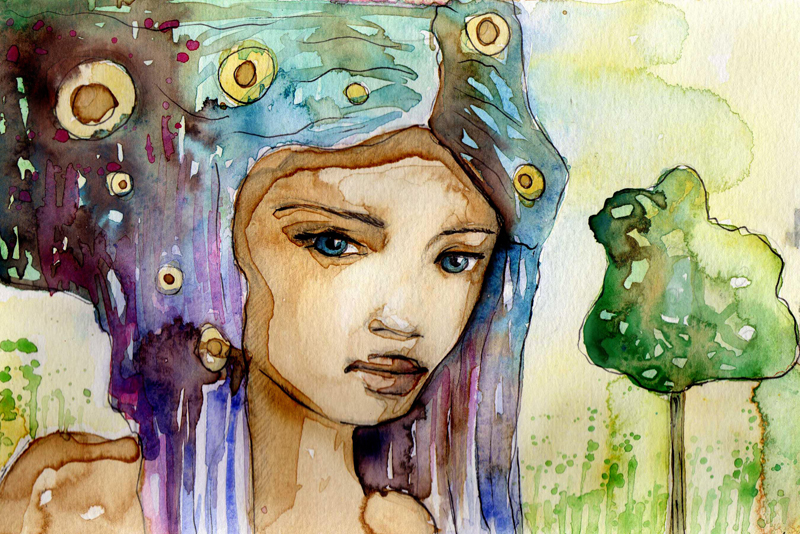Sewing Machine Presser Feet

Just knowing what presser foot to use with what type needle or thread to produce a desired sewing or seaming result can be daunting as there are an assortment of presser feet that perform a variety of tasks for fashion, home décor, quilting, heirloom, and craft sewing.
The particular make and model of your sewing machine will be helpful to know in identifying what common (and optional) presser feet are used with the machine will help in determining what the sewing result would be for each type of foot. If your owner’s manual is not available, or is unclear as to the different presser feet functions for the presser feet that did come with your machine, sewing a sample using each type of presser foot helps to identify the foot and its task as well.
All machines today come with a commonly used regular foot that is multi-purpose for either straight stitching or zigzag types of stitching; usually included are presser feet for sewing zippers to a garment opening (for regular and invisible zippers); one for making buttonholes; and one for holding buttons and snaps in place while your machine zigzags stitches to secure them to the fabric.
A single straight stitch foot, usually used in combination with a straight-stitch needle plate (also called a throat plate) that has a smaller spaced needle hole opening for the needle to pass through may be included with your machine as well.
Specialty or optional presser feet would include an even feed or walkingfoot,w hich helps prevent fabric layers from slipping between the feed dogs of the machine and the bottom of the presser foot. It allows for fabric layers under the presser foot to be evenly held under the needle so that when the end of the seam to be sewn is reached, both (or more) layers of fabric are even, with not one slightly inched out from under the other.
A rolled or narrow hem foot makes a small rolled hem, like the kind seen on the end of sheer scarves. This foot usually makes a 2, 4 or 6 mm tiny rolled hem.
An overlock presser foot may be included with many machine models as it creates an overcast stitch to wrap thread around the edge of your fabric to prevent raveling. This presser foot was popular prior to the easy availability of sergers for the home sewers.
A gathering foot, also called a shirring foot, is a nice touch as it catches up nice even gathered folds as it passes along the fabric edge.
A pintuck foot is used in conjunction with a twin-needle and sews evenly-spaced, tiny, [usually ⅛ to ¼ wide] vertical or horizontal tucks. Pintucks are often seen in heirloom sewing projects.
A blindstitch hem foot will allow for sewing a hem on the wrong side of the garment where the stitches are not visible on the right side.
A piping foot comes in a variety of sizes, is usually used for making corded piping; can be used for sewing over pearl-like trims on bridal and evening gowns, and bridal veils.
A roller foot will produce much less friction when sewing on leather, vinyl, some elastic, crushable velvet and other deep pile fabrics as it literally rolls over the fabric with little tension and without leaving pressure foot marks on either side of the seam line.
A ruffler foot sews nicely spaced tucked pleats.
A clear, see-through presser foot, does more than double duty for top stitching, edge stitching, free-handed pintucking, appliqué work, stitching-in-the-ditch, sewing less than the traditional ⅝” seam, and trapunto work.
Specialized presser feet are available for sewing over elastic, sequins, ribbons, braided trims, free-motion embroidery and darning. Various quilting feet can be found for some machines as well.
There are so many wonderful websites available from home sewing machine manufacturers listing common and specialty presser feet, their function and often with instructional video clips on each.
Sew happy, sew inspired.
The particular make and model of your sewing machine will be helpful to know in identifying what common (and optional) presser feet are used with the machine will help in determining what the sewing result would be for each type of foot. If your owner’s manual is not available, or is unclear as to the different presser feet functions for the presser feet that did come with your machine, sewing a sample using each type of presser foot helps to identify the foot and its task as well.
All machines today come with a commonly used regular foot that is multi-purpose for either straight stitching or zigzag types of stitching; usually included are presser feet for sewing zippers to a garment opening (for regular and invisible zippers); one for making buttonholes; and one for holding buttons and snaps in place while your machine zigzags stitches to secure them to the fabric.
A single straight stitch foot, usually used in combination with a straight-stitch needle plate (also called a throat plate) that has a smaller spaced needle hole opening for the needle to pass through may be included with your machine as well.
Specialty or optional presser feet would include an even feed or walkingfoot,w hich helps prevent fabric layers from slipping between the feed dogs of the machine and the bottom of the presser foot. It allows for fabric layers under the presser foot to be evenly held under the needle so that when the end of the seam to be sewn is reached, both (or more) layers of fabric are even, with not one slightly inched out from under the other.
A rolled or narrow hem foot makes a small rolled hem, like the kind seen on the end of sheer scarves. This foot usually makes a 2, 4 or 6 mm tiny rolled hem.
An overlock presser foot may be included with many machine models as it creates an overcast stitch to wrap thread around the edge of your fabric to prevent raveling. This presser foot was popular prior to the easy availability of sergers for the home sewers.
A gathering foot, also called a shirring foot, is a nice touch as it catches up nice even gathered folds as it passes along the fabric edge.
A pintuck foot is used in conjunction with a twin-needle and sews evenly-spaced, tiny, [usually ⅛ to ¼ wide] vertical or horizontal tucks. Pintucks are often seen in heirloom sewing projects.
A blindstitch hem foot will allow for sewing a hem on the wrong side of the garment where the stitches are not visible on the right side.
A piping foot comes in a variety of sizes, is usually used for making corded piping; can be used for sewing over pearl-like trims on bridal and evening gowns, and bridal veils.
A roller foot will produce much less friction when sewing on leather, vinyl, some elastic, crushable velvet and other deep pile fabrics as it literally rolls over the fabric with little tension and without leaving pressure foot marks on either side of the seam line.
A ruffler foot sews nicely spaced tucked pleats.
A clear, see-through presser foot, does more than double duty for top stitching, edge stitching, free-handed pintucking, appliqué work, stitching-in-the-ditch, sewing less than the traditional ⅝” seam, and trapunto work.
Specialized presser feet are available for sewing over elastic, sequins, ribbons, braided trims, free-motion embroidery and darning. Various quilting feet can be found for some machines as well.
There are so many wonderful websites available from home sewing machine manufacturers listing common and specialty presser feet, their function and often with instructional video clips on each.
Sew happy, sew inspired.

Related Articles
Editor's Picks Articles
Top Ten Articles
Previous Features
Site Map
Content copyright © 2023 by Cheryl Ellex. All rights reserved.
This content was written by Cheryl Ellex. If you wish to use this content in any manner, you need written permission. Contact Cheryl Ellex for details.







